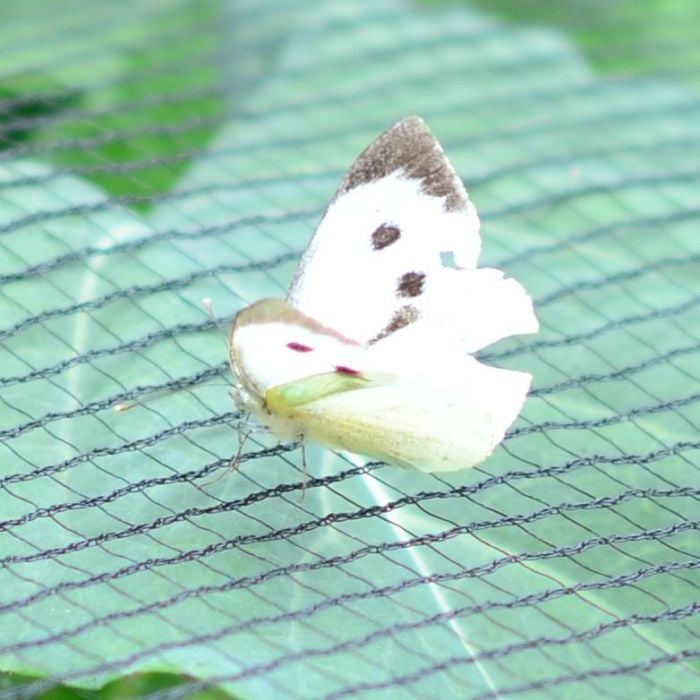If you’ve ever grown cabbages, kale, or other leafy greens in your garden and noticed leaves riddled with holes, there’s a good chance cabbage white butterflies are to blame.
While they may look harmless fluttering around in summer, these pests can do serious damage to brassica crops. Understanding their life cycle and how to break it is the key to stopping them. One of the simplest and most reliable defences? Soft butterfly netting.
Meet the Cabbage White Butterfly
The cabbage white butterfly (Pieris rapae and Pieris brassicae) is one of the most common garden pests in the UK. There are actually two types often seen in gardens: Small white (Pieris rapae) and Large white (Pieris brassicae). Both species are particularly drawn to brassicas — the plant family that includes cabbage, kale, broccoli, cauliflower, and sprouts.
Life Cycle of the Cabbage White Butterfly
Understanding the life cycle of this pest helps explain how quickly infestations can take hold:
- Egg Stage – In spring and summer, adult females lay tiny yellow eggs on the underside of brassica leaves. The large white lays eggs in clusters, while the small white lays single eggs.
- Larvae (Caterpillar) Stage – After about a week, the eggs hatch into caterpillars. These are the true culprits behind the damage — they feed ravenously on leaves, often leaving only the leaf veins behind. The larvae stage lasts around 2–3 weeks.
- Pupa (Chrysalis) Stage – Once mature, caterpillars pupate on nearby structures, fences, or plant stems. They remain in this stage for around 1–2 weeks in summer, though late-season pupae may overwinter.
- Adult Butterfly Stage – The cycle begins again as adult butterflies emerge, often producing 2 to 3 generations per year — meaning infestations can quickly escalate during warm months.
How to Stop Them: Use Soft Butterfly Netting
One of the most effective ways to break this cycle and protect your crops is by using soft butterfly netting. Designed to keep butterflies and birds out, it creates a safe environment for your plants to grow without interference. Always check your plants are pest free before covering, and cover as soon as you plant out.
This netting can be laid directly over the crops or used on fruit and vegetable cages or with garden hoops. The Grazers ready-to-use spray can also be used for extra protection.
What is Butterfly Netting?
- Hole size of 5mm x 7mm – small enough to block butterflies while allowing light and rain to pass through
- Made from UV-stabilised HDPE – weather-resistant and long-lasting
- Available in green or black
Garden Netting to Stop Cabbage White Butterflies
Soft butterfly netting is lightweight yet strong, making it easy to use in various ways: drape directly over crops, secure with hoops, frames, or canes, use with walk-in or low-height fruit and vegetable cages, or cover ponds to prevent debris build-up and deter herons.
Pollination and Garden Netting
Due to the small mesh size, bees cannot pass through the netting. If you're growing flowering crops that need pollination, remove the netting during the flowering period.
FAQs on Cabbage White Butterflies
When are cabbage white butterflies most active?
They are most common from late spring through early autumn, but mild winters can allow overwintered pupae to emerge earlier.
Can butterfly netting stop other pests?
Yes, it also reduces damage from birds, pigeons, and some larger insects. For smaller pests like aphids or carrot fly, consider Veggiemesh insect netting.
What crops need butterfly netting?
Brassicas such as cabbage, kale, cauliflower, broccoli, and sprouts benefit most. Cover as soon as seedlings or young plants are set out.
How do I secure butterfly netting?
Use with garden hoops or frame kits to keep the netting lifted off the plants, ensuring airflow and easy access.
